
Wine Culture and Information since 2002 - Volume 22
 Wine Culture and Information since 2002 - Volume 22 |
|
Comparing DolcettoAmong the most famous grapes of Piedmont, Dolcetto produces wines with interesting organoleptic qualities, a pleasing wine where fruit aromas are protagonists |
|
In these times where everyone is more or less looking for strong wines, robus and with the typical structure given by wood as to make them important, wines like Dolcetto are having some difficulties in the now vast wine scene. With its typical organoleptic qualities directly recalling fruits and flowers, Dolcetto is a wine which can be defined as a rarity. Nevertheless, in past times in Piedmont - its homeland - they used to drink Barbera wines everyday, whereas in holidays they usually uncorked bottles of Dolcetto. In other words, Dolcetto was the wine of the holidays, considered as a special wine for special occasions. The interest for Dolcetto is not so high today and this is could also be because of its name, as it could recall a wine with a basically sweet taste (Dolcetto means slightly sweet in Italian) and this is something absolutely false. Its name can in fact be associated to a style of wine instead of a grape. For this is reason, we should remember, first of all, Dolcetto is a grape and in Piedmont exist eleven DOC areas in which Dolcetto is used for the production of mono varietal wines, as well as two DOCG wines. Dolcetto is also found in Liguria, where it is known as Ormeasco, and also in this region is used for the production of DOC wines. In Piedmont is mainly cultivated in the provinces of Cuneo, Asti and Alessandria, whereas in Liguria is mainly cultivated in the province of Imperia. In Piedmont there are eleven Denominazione d'Origine Controllata wines (DOC, Denomination of Controlled Origin) about Dolcetto: Dolcetto d'Alba, Dolcetto di Dogliani, Dolcetto di Diano d'Alba, Dolcetto delle Langhe Monregalesi, Dolcetto d'Asti, Dolcetto d'Acqui, Dolcetto d'Ovada - representing the seven “historical” DOC areas - Langhe Dolcetto, Monferrato Dolcetto, Colli Tortonesi Dolcetto and Pinerolese Dolcetto. Moreover, there are two Denominazione d'Origine Controllata e Garantita wines (DOCG, Denomination of Controlled and Guaranteed Origin): Dolcetto di Dogliani Superiore - or, in short, Dogliani - designated in 2005, and Dolcetto di Ovada Superiore - or, in short, Ovada - designated in 2008.
|
|
The origins of Dolcetto are not clear. Some believe it is a grape from Piedmont, others believe it is from Liguria - where it is known as Ormeasco - and introduced in Piedmont in medieval times as a result of commercial trading. The name has its origins from its evident sweetness, however Dolcetto is mainly used for the production of dry wines. The area in which Dolcetto gives its best is Dogliani, where was found a document dated back to 1593 in which the grape is mentioned. From the eighteenth century on Dolcetto is mentioned in many documents, whereas its spreading will begin after the 1850s. Dolcetto is an early ripening grape and harvesting is usually done around the half of September. Cultivation is mainly done in limestone and marly soils, in hilly areas from 250 and 600 meters above sea level (820-1970 feet), although it can also ripe well at altitudes higher than 700 meters (2300 feet).
Dolcetto is usually vinified in inert containers, very rarely in cask or barrique. The choice of inert containers allows in fact to exalt the typical fresh qualities of flowers and fruits of Dolcetto. In our comparative tasting we will examine two Dolcetto wines vinified in inert containers, although coming from different areas, and a Dolcetto aged in barrique. The first wine of the tasting is Seghesio's Dolcetto d'Alba Vigneto della Chiesa, aged for 9 months in steel tanks. The second wine is Pecchenino's Dolcetto di Dogliani Siri d'Jermu, aged for 6 months in steel tanks. The last wine of the tasting is Enzo Boglietti's Dolcetto d'Alba Tiglineri, the only wine of the three to be aged in wood for 8 months in barrique. The wines will be served at the temperature of 18° C (64° F) and for the sensorial analysis will be used, as usual, three ISO tasting glasses.
|
||||||||
|
Thanks to its content in polyphenols and coloring substances, wines produced with Dolcetto are characterized by pretty intense and deep colors, with pretty low transparency. Because of the traditional custom of considering Dolcetto as an immediate and crisp wine, therefore favoring its consumption in youth, the most typical color observed in these wines is ruby red, intense and brilliant, with nuances of intense purple red, as well as ruby red. Some historical producers, convinced of the potentials of this grape, keep in their cellars Dolcetto wines aged for some years - therefore proving this grape can proficiently develop with time - and in which the ruby red color can be observed in the nuance as well. Let's begin the appearance analysis phase from Seghesio's Dolcetto d'Alba Vigneto della Chiesa. The color of this first wine - which can be observed a the base of the glass while holding it in a tilted position, where the liquid mass is thicker - is intense ruby red, whereas nuances, observed towards the opening of the glass, where the thickness of wine is lower, shows an eviden purple red color. Also the color of the second wine - Pecchenino's Dolcetto di Dogliani Siri d'Jermu - shows an intense ruby red color and nuances of purple red, typical in Dolcetto. It should be noticed the low transparency in both wines. The aspect of the third wine, Enzo Boglietti's Dolcetto d'Alba Tiglineri, is not different from the previous two wines. The color of this wine is intense and deep ruby red, deeper than previous wines, and nuances is confirmed as purple red. Also the transparency of this wine is evidently low.
|
|
Fruits and flowers. This is how could be described the world of Dolcetto, both for the techniques used for its production - mainly inert containers such as steel tanks and cement - as well as for the fact these wines are consumed within two or three years from harvesting. Among the most typical olfactory qualities in Dolcetto are mentioned cherry and violet, as well as an aroma which is rarely found in red wines: almond. This particular aroma is frequently found in wines produced with Dolcetto, a quality which is frequently found in its basically bitter flavors recalling almond. In young Dolcetto wines can sometimes be found a peach aroma, a quality typical in many white wine. Among the mos representative flower aromas in Dolcetto, besides violet, are mentioned rose and cyclamen. Among fruits are found plum, blackberry, strawberry, raspberry and blueberry. Let's begin the discovery of Dolcetto's aromas from the first wine of the comparative tasting: Seghesio's Dolcetto d'Alba Vigneto della Chiesa. While keeping the glass in vertical position and without swirling, we will begin the evaluation of opening aromas, that is the olfactory sensations that mainly identify the wine, made of aromatic substances which volatilize with a small quantity of oxygen. The first smell will allow the appreciation of intense and clean aromas of cherry, plum and blueberry, typical opening sensations in Dolcetto. After having swirled the glass, we will proceed with a second smell in order to complete the aromatic profile of wine. From the glass will be perceived aromas of violet - the most characteristic flower aromas in Dolcetto - raspberry, blackberry, cyclamen, almond and hints of carob. It should be noticed, in particular, the aroma of almond, a frequent quality in Dolcetto. Let's now pass to the second wine - Pecchenino's Dolcetto di Dogliani Siri d'Jermu - which, like the previous wine, ages in steel tanks. The opening of this second Dolcetto is characterized by intense and clean aromas of cherry, blueberry and blackberry, also in this case pretty typical in Dolcetto. After having swirled the glass, the olfactory profile will be completed with aromas of raspberry, plum, strawberry, cyclamen, violet, black currant and a pleasing hin of menthol. It should also be noticed the aromas of peach and the usual almond. The opening of Enzo Boglietti's Dolcetto d'Alba Tiglineri - the only of the three to be aged in barrique for 8 months - is characterized by pleasing aromas of cherry, plum and blackberry. After having swirled the glass, in order to favor the development of other aromas, we will proceed with the second smell which will complete the aromatic profile of the wine with violet, blueberry, raspberry, peach and almond as well as aromas of vanilla and eucalyptus, the mark of the aging in barrique.
|
||||
|
Despite its fame of easy and immediate wine, Dolcetto offers good surprises to the palate as well. Among the most evident gustatory qualities of Dolcetto, there certainly is freshness given by the flavors of fruits, in particular black cherry and blackberry. Also in the finish is usually found a quality typical in white wines: after having swallowed a Dolcetto wine, most of the times the flavor perceived in the mouth recalls almond. Dolcetto is a grape with a moderate acidity, therefore its wines can be pleasingly round, thanks to the quantity of tannins which is never excessive or imposing. Nevertheless in the attack the contribution of tannins can be well evident, even though in most of cases, astringency is never so strong. Besides its moderate acidity, in Dolcetto wines aged in inert containers can be perceived a pleasing crispness, well matched to the fruit character of this wine. Let's begin the gustatory analysis of our wines from Seghesio's Dolcetto d'Alba Vigneto della Chiesa. The attack of this Dolcetto is moderately tannic in which can be appreciated the fresh nature of fruit flavors, in particular cherry, plum and blueberry. The wine is well balanced thanks to the contribution of alcohol with an evident pleasing character. Let's now pass to the second wine of our comparative tasting: Pecchenino's Dolcetto di Dogliani Siri d'Jermu. The attack of this Dolcetto is more tannic and astringent than the previous wine, although having a typical fresh fruity nature of cherry, blueberry and blackberry. Also in this case can be noticed the good balance of wine and the pleasing sensation of freshness which can be perceived in the mouth. Also the attack of the third wine - Enzo Boglietti's Dolcetto d'Alba Tiglineri - is pretty tannic, although in this case will be noticed a stronger roundness and structure given by the aging in barrique. Despite the evident contribution of wood, also in this wine will be perceived the characteristic fruit nature of cherry, blueberry and blackberry.
|
|
Despite Dolcetto is associated to its typical image of immediate and fresh wine, rich of fruit sensations, this grape is capable of making interesting wines going beyond immediateness. The finish of Seghesio's Dolcetto d'Alba Vigneto della Chiesa is persistent, leaving in the mouth pleasing and clean flavors of cherry, blueberry and plum. The finish of the second wine - Pecchenino's Dolcetto di Dogliani Siri d'Jermu - is persistent, leaving in the mouth, jus like the previous wine, intense and clean flavors of cherry, blueberry and plum, a typical finish of Dolcetto. Also the finish of the third wine of our comparative tasting, Enzo Boglietti's Dolcetto d'Alba Tiglineri, is persistent, leaving in the mouth intense and clean flavors of cherry, blueberry, plum and raspberry, with a sensation of structure and roundness more evident than the two previous wines. Finally, it should be noticed the contribution of wood in Dolcetto, by comparing the third wine with the two previous wines.
|
Wines of the Month |
|
|
|
Score legend Prices are to be considered as indicative. Prices may vary according to the country or the shop where wines are bought |
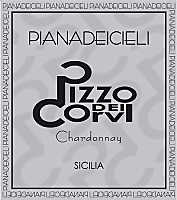
|
|
Pizzo dei Corvi 2007 |
|
| Pianadeicieli (Sicily, Italy) | |
| Grapes: Chardonnay | |
| Price: € 9.00 | Score: |
| Pizzo dei Corvi shows an intense golden yellow color and nuances of golden yellow, very transparent. The nose reveals intense, clean, pleasing and refined aromas which start with hints of banana, quince and citrus fruits followed by aromas of pineapple, candied fruits, hawthorn, plum, honey, broom and hints of vanilla. The mouth has good correspondence to the nose, a crisp attack and pleasing roundness, however balanced by alcohol, good body, intense flavors, agreeable. The finish is persistent with flavors of banana, honey and citrus fruits. A small part of Pizzo dei Corvi ages in barrique. | |
| Food Match: Pasta with fish and mushrooms, Roasted white meat, Roasted fish | |
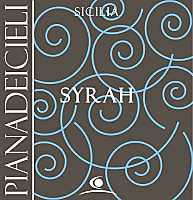
|
|
Syrah 2006 |
|
| Pianadeicieli (Sicily, Italy) | |
| Grapes: Syrah | |
| Price: € 8.00 | Score: |
| This Syrah shows an intense ruby red color and nuances of ruby red, little transparency. The nose reveals intense, clean, pleasing and refined aromas that start with hints of black cherry, plum and black currant followed by aromas of blueberry, violet, vanilla, tobacco, black pepper, cinnamon, cocoa and menthol. The mouth has good correspondence to the nose, a tannic attack and however balanced by alcohol, good body, intense flavors, pleasing roundness. The finish is persistent with flavors of black cherry, plum and black currant. A part of this Syrah ages in barrique. | |
| Food Match: Broiled meat and barbecue, Roasted meat, Braised and stewed meat, Hard cheese | |
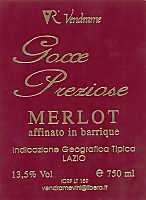
|
|
Gocce Preziose Merlot 2006 |
|
| Vendrame (Latium, Italy) | |
| Grapes: Merlot | |
| Price: € 5.00 | Score: |
| Gocce Preziose Merlot shows an intense ruby red color and nuances of garne red, little transparency. The nose denotes intense, clean and pleasing aromas that start with hints of plum and black cherry followed by aromas of vanilla, carob and menthol. The mouth has good correspondence to the nose, a tannic attack and pleasing roundness, however balanced by alcohol, good body, intense flavors. The finish is pretty persistent with flavors of plum and black cherry. Gocce Preziose Merlot ages for 12 months in barrique followed by at least 4 months of aging in bottle. | |
| Food Match: Stuffed pasta, Sauteed meat, Stewed meat | |
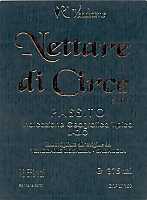
|
|
Nettare di Circe 2006 |
|
| Vendrame (Latium, Italy) | |
| Grapes: Muscat Blanc | |
| Price: € 7.40 - 375ml | Score: |
| Nettare di Circe shows a pale amber yellow color and nuances of golden yellow, transparent. The nose reveals intense, clean and pleasing aromas which start with hints of raisin, candied fruits and citrus fruit peel followed by aromas of dried fig, peach jam and vanilla. The mouth has good correspondence to the nose, a sweet and round attack, however balanced by alcohol, good body, intense flavors. The finish is persistent with flavors of raisin, dried fig and candied fruits. Nettare di Circe ages for 12 months in small oak barrels followed by at least 4 months of aging in bottle. | |
| Food Match: Confectionery | |
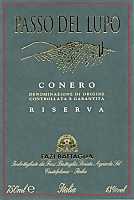
|
|
Rosso Conero Riserva Passo del Lupo 2005 |
|
| Fazi Battaglia (Marches, Italy) | |
| Grapes: Montepulciano (85%), Sangiovese (15%) | |
| Price: € 18.00 | Score: |
| Rosso Conero Riserva Passo del Lupo shows an intense ruby red color and nuances of ruby red, little transparency. The nose denotes intense, clean, pleasing, refined and elegant aromas which start with hints of plum, black cherry and blackberry followed by aromas of violet, blueberry, vanilla, tobacco, pink pepper, cinnamon, chocolate and menthol. The mouth has good correspondence to the nose, a tannic attack and however balanced by alcohol, full body, intense flavors, agreeable. The finish is persisten with flavors of black cherry, plum and blackberry. A well made wine. Rosso Conero Riserva Passo del Lupo ages for 24 months in barrique followed by about 10 months of aging in bottle. | |
| Food Match: Game, Roasted meat, Braised and stewed meat, Hard cheese | |
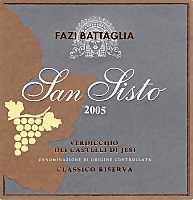
|
|
Verdicchio dei Castelli di Jesi Classico Riserva San Sisto 2005 |
|
| sto.jpg | |
| Grapes: Verdicchio | |
| Price: € 18.00 | Score: |
| Verdicchio dei Castelli di Jesi Classico Riserva San Sisto shows a brilliant golden yellow color and nuances of straw yellow, very transparent. The nose reveals intense, clean, pleasing, refined and elegan aromas that start with hints of apple, vanilla and almond followed by aromas of peach, plum, hazelnut, hawthorn, pear, honey, butter, citrus fruits, pineapple and mineral. The mouth has excellent correspondence to the nose, a crisp attack and however balanced by alcohol, good body, intense flavors, pleasing roundness. The finish is very persistent with long flavors of apple, plum, almond and pineapple. A well made wine. Verdicchio dei Castelli di Jesi Classico Riserva San Sisto ages for 12 months in barrique followed by at least 12 months of aging in bottle. | |
| Food Match: Fish soups, Pasta with fish, Roasted fish, Roasted white meat | |
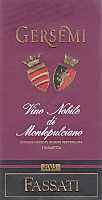
|
|
Vino Nobile di Montepulciano Gersemi 2005 |
|
| Fassati (Tuscany, Italy) | |
| Grapes: Sangiovese (90%), Merlot, Cabernet Sauvignon (10%) | |
| Price: € 18.00 | Score: |
| Vino Nobile di Montepulciano Gersemi shows an intense ruby red color and nuances of ruby red, little transparency. The nose reveals intense, clean, pleasing and refined aromas which start with hints of plum, black cherry and violet followed by aromas of raspberry, vanilla, tobacco, blueberry, chocolate, mace and menthol. The mouth has good correspondence to the nose, a tannic attack and however balanced by alcohol, full body, intense flavors. The finish is persistent with flavors of black cherry, plum and blueberry. Vino Nobile di Montepulciano Gersemi ages for 24 months in barrique, 12 months in cask and for 10 months in bottle. | |
| Food Match: Game, Roasted meat, Braised and stewed meat with mushrooms, Hard cheese | |
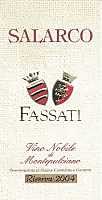
|
|
Vino Nobile di Montepulciano Riserva Salarco 2004 |
|
| Fassati (Tuscany, Italy) | |
| Grapes: Sangiovese (95%), Mammolo, Colorino (5%) | |
| Price: € 24.00 | Score: |
| Vino Nobile di Montepulciano Riserva Salarco shows a brilliant ruby red color and nuances of garnet red, moderate transparency. The nose reveals intense, clean, pleasing, refined and elegant aromas which start with hints of plum, black cherry and violet followed by aromas of vanilla, blackberry, blueberry, cocoa, cinnamon, mace, tobacco and menthol. The mouth has good correspondence to the nose, a tannic attack and however balanced by alcohol, full body, intense flavors, agreeable. The finish is persistent with flavors of black cherry, plum and blackberry. A well made wine. Vino Nobile di Montepulciano Riserva Salarco ages for 24 months in barrique followed by at least 10 months of aging in bottle. | |
| Food Match: Game, Roasted meat, Braised and stewed meat with mushrooms, Hard cheese | |
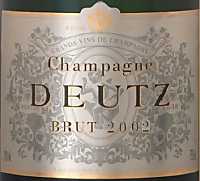
|
|
Champagne Deutz Brut Millesimée 2002 |
|
| Deutz (Champagne, France) | |
| Grapes: Pinot Noir (60%), Chardonnay (30%), Pinot Meunier (10%) | |
| Price: € 55.00 | Score: |
| Champagne Deutz Brut Millesimée shows brilliant straw yellow color and nuances of straw yellow, fine and persistent perlage, very transparent. The nose reveals intense, clean, pleasing, refined and elegant aromas which start with hints of banana, hazelnut and bread crust followed by aromas of yeast, pear, apple, mineral, hawthorn, croissant, marzipan, raspberry, butter and praline. The mouth has excellent correspondence to the nose, an effervescent and crisp attack, however balanced by alcohol, good body, intense flavors, agreeable. The finish is persistent with flavors of banana, raspberry, apple and hazelnut. A well made wine. | |
| Food Match: Pasta and risotto with fish, Stewed white meat, Stewed fish | |
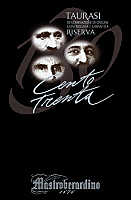
|
|
Taurasi Riserva Centotrenta 1999 |
|
| Mastroberardino (Campania, Italy) | |
| Grapes: Aglianico | |
| Price: € 30.00 | Score: |
| Taurasi Riserva Centotrenta shows a brilliant ruby red color and nuances of garnet red, moderate transparency. The nose reveals intense, clean, pleasing, refined and elegant aromas which start with hints of plum, blackberry and black cherry followed by aromas of dried violet, blueberry, tobacco, vanilla, leather, cocoa, mace, licorice and menthol. The mouth has excellent correspondence to the nose, a tannic attack and however balanced by alcohol, full body, intense flavors, pleasing roundness. The finish is very persistent with long flavors of black cherry, blackberry and plum. A well made wine. Taurasi Riserva Centotrenta ages for about 30 months in cask and barrique followed by at least 18 months of aging in bottle. | |
| Food Match: Game, Roasted meat, Braised and stewed meat, Hard cheese | |
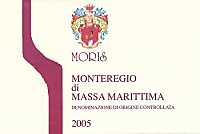
|
|
Monteregio di Massa Marittima 2005 |
|
| Moris Farms (Tuscany, Italy) | |
| Grapes: Sangiovese (90%), Cabernet Sauvignon (10%) | |
| Price: € 12.00 | Score: |
| Monteregio di Massa Marittima shows a brilliant ruby red color and nuances of ruby red, moderate transparency. The nose reveals intense, clean, pleasing and refined aromas that start with hints of black cherry, plum and violet followed by aromas of raspberry, cyclamen, vanilla, tobacco, cinnamon, chocolate and menthol. The mouth has good correspondence to the nose, a tannic attack and pleasing crispness, however balanced by alcohol, good body, intense flavors. The finish is persistent with flavors of black cherry, plum and raspberry. Monteregio di Massa Marittima ages for 18 months in barrique followed by 4 months of aging in bottle. | |
| Food Match: Broiled meat and barbecue, Stewed and braised meat with mushrooms, Roasted meat | |
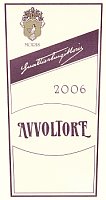
|
|
Avvoltore 2006 |
|
| Moris Farms (Tuscany, Italy) | |
| Grapes: Sangiovese (75%), Cabernet Sauvignon (20%), Syrah (5%) | |
| Price: € 30.00 | Score: |
| Avvoltore shows an intense ruby red color and nuances of purple red, little transparency. The nose denotes intense, clean, pleasing, refined and elegant aromas that start with hints of black cherry, plum and black currant followed by aromas of blueberry, violet, vanilla, dried rose, tobacco, cinnamon, chocolate and menthol. The mouth has good correspondence to the nose, a tannic attack and however balanced by alcohol, full body, intense flavors, agreeable. The finish is persistent with flavors of black cherry, plum and black currant. A well made wine. Avvoltore ages for abou 12 months in barrique followed by 6 months of aging in bottle. | |
| Food Match: Game, Roasted meat, Braised and stewed meat, Hard cheese | |
|
||||||||
|
DiWineTaste Polls
|
| |||||||
Privacy Policy | |||||||


| Copyright © 2002-2024 Antonello Biancalana, DiWineTaste - All rights reserved |
| All rights reserved under international copyright conventions. No part of this publication and of this WEB site may be
reproduced or utilized in any form or by any means, electronic or mechanical, without permission in writing from DiWineTaste. |